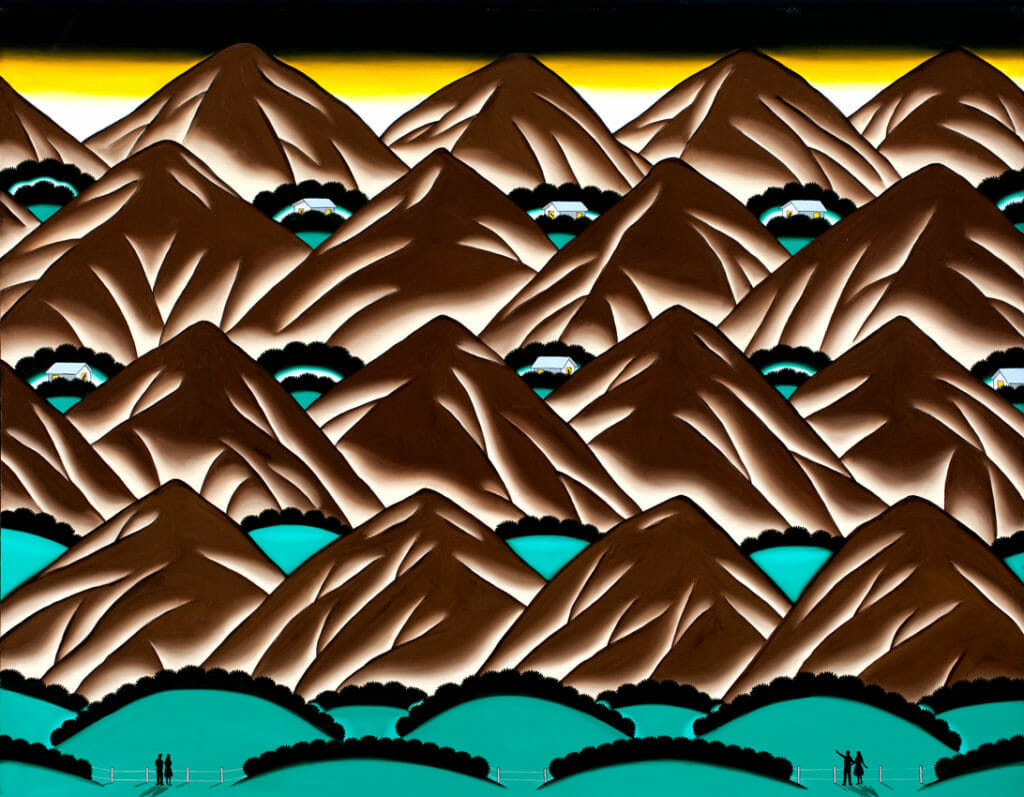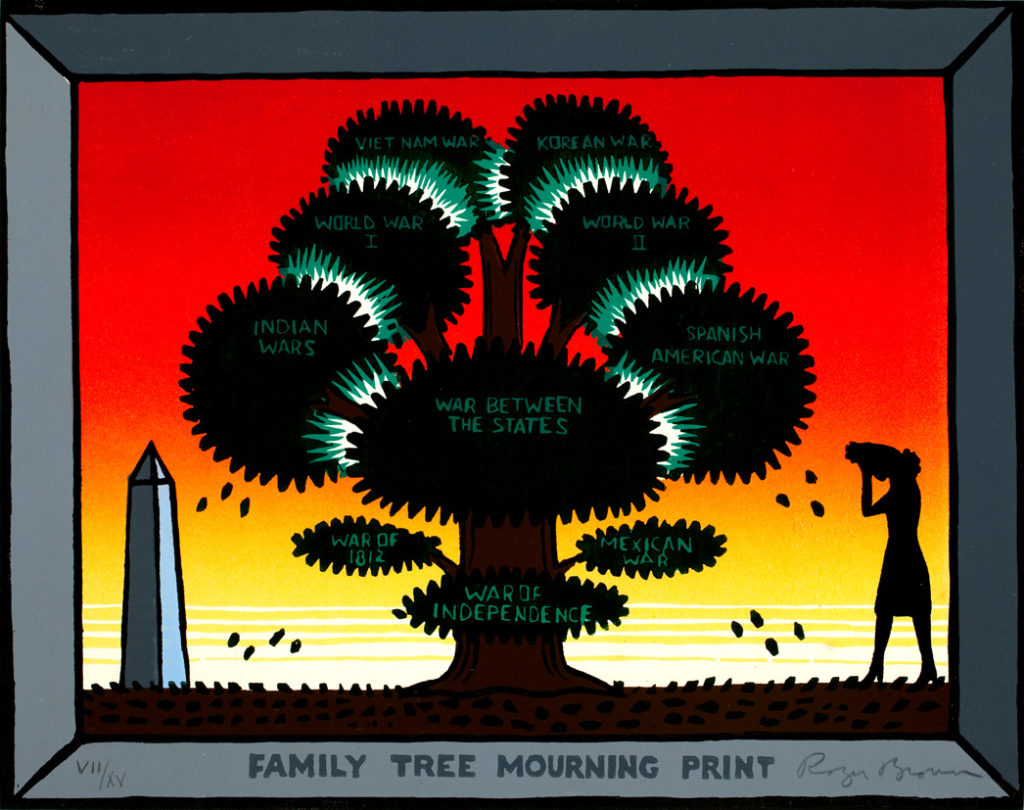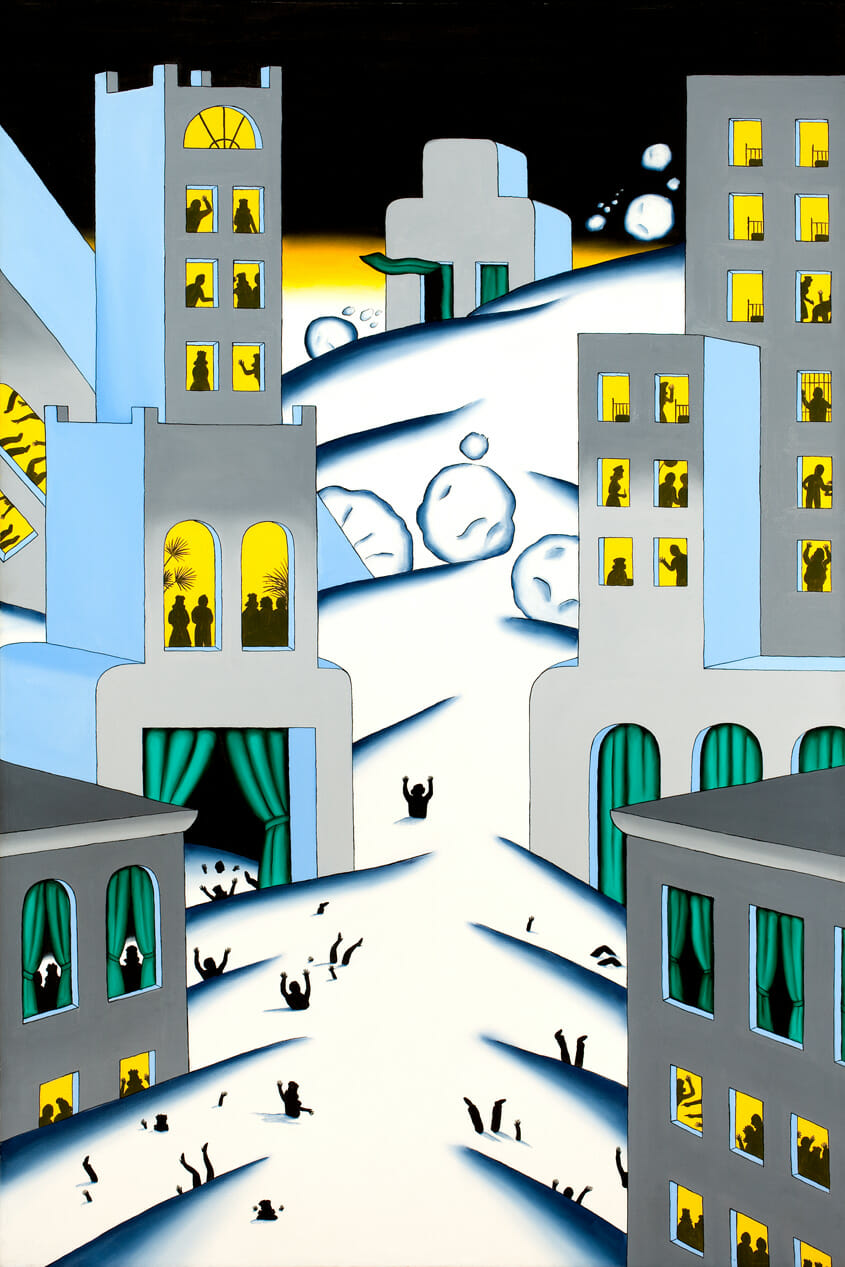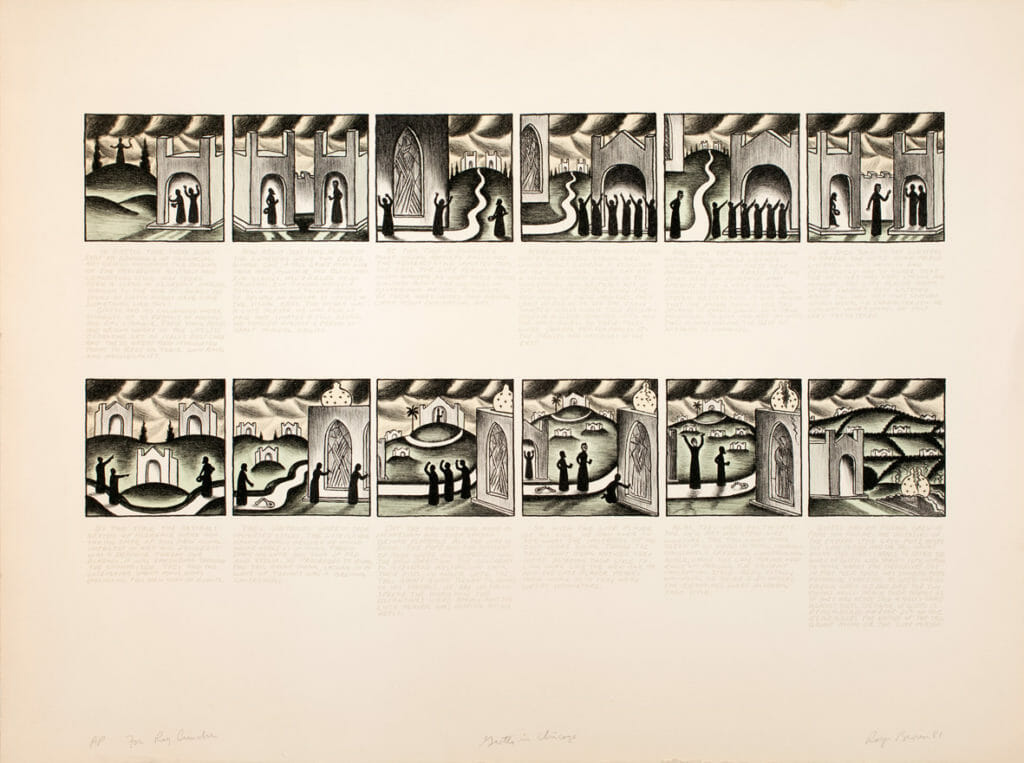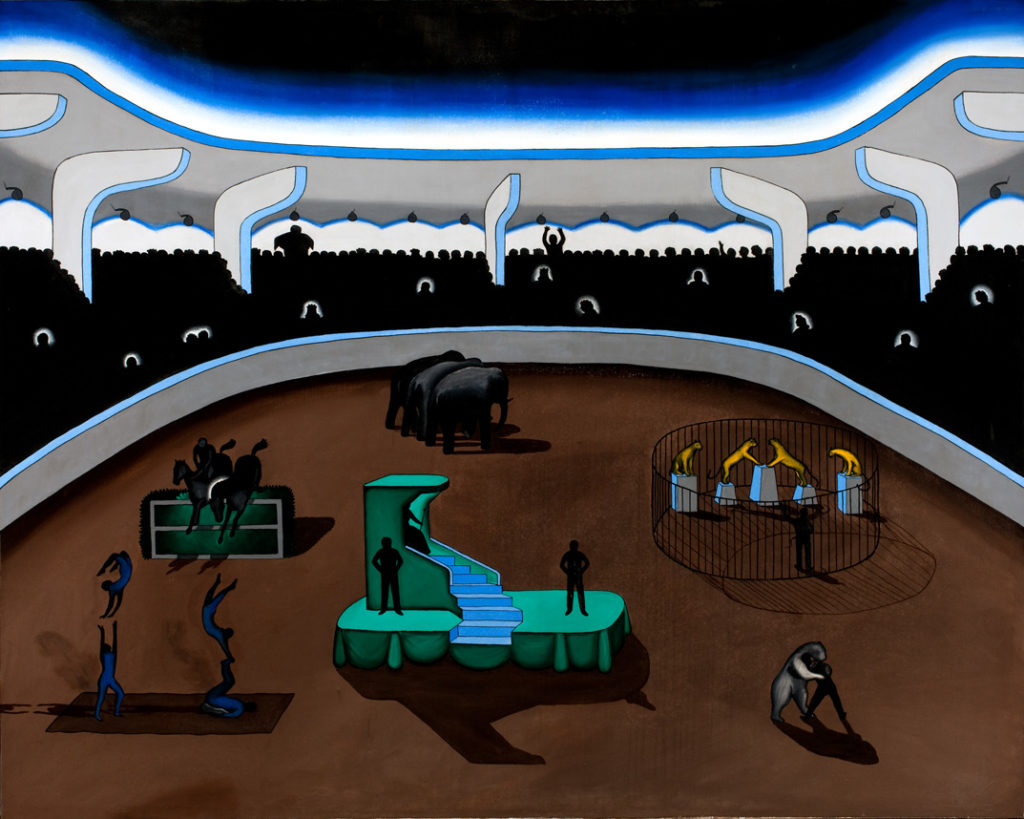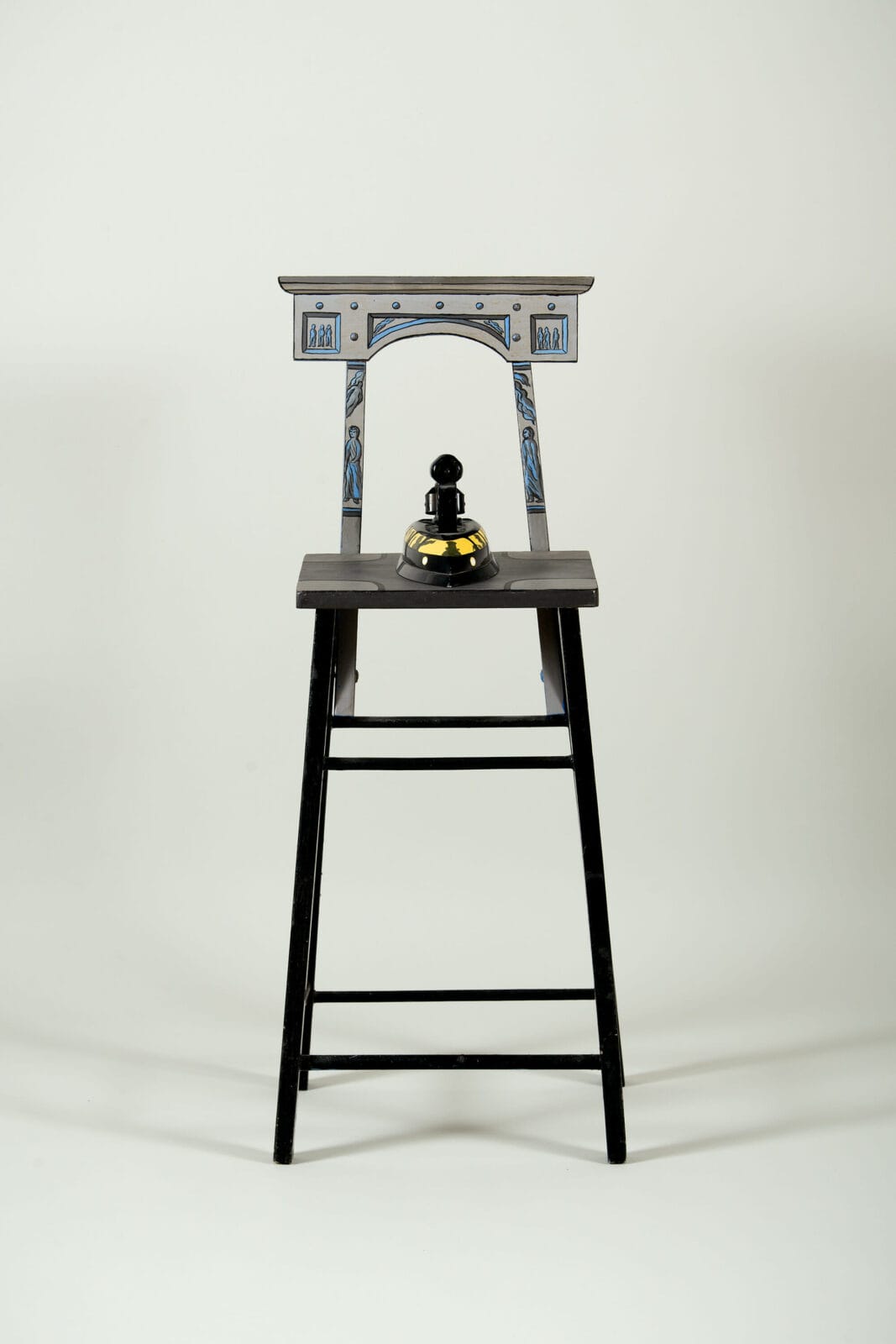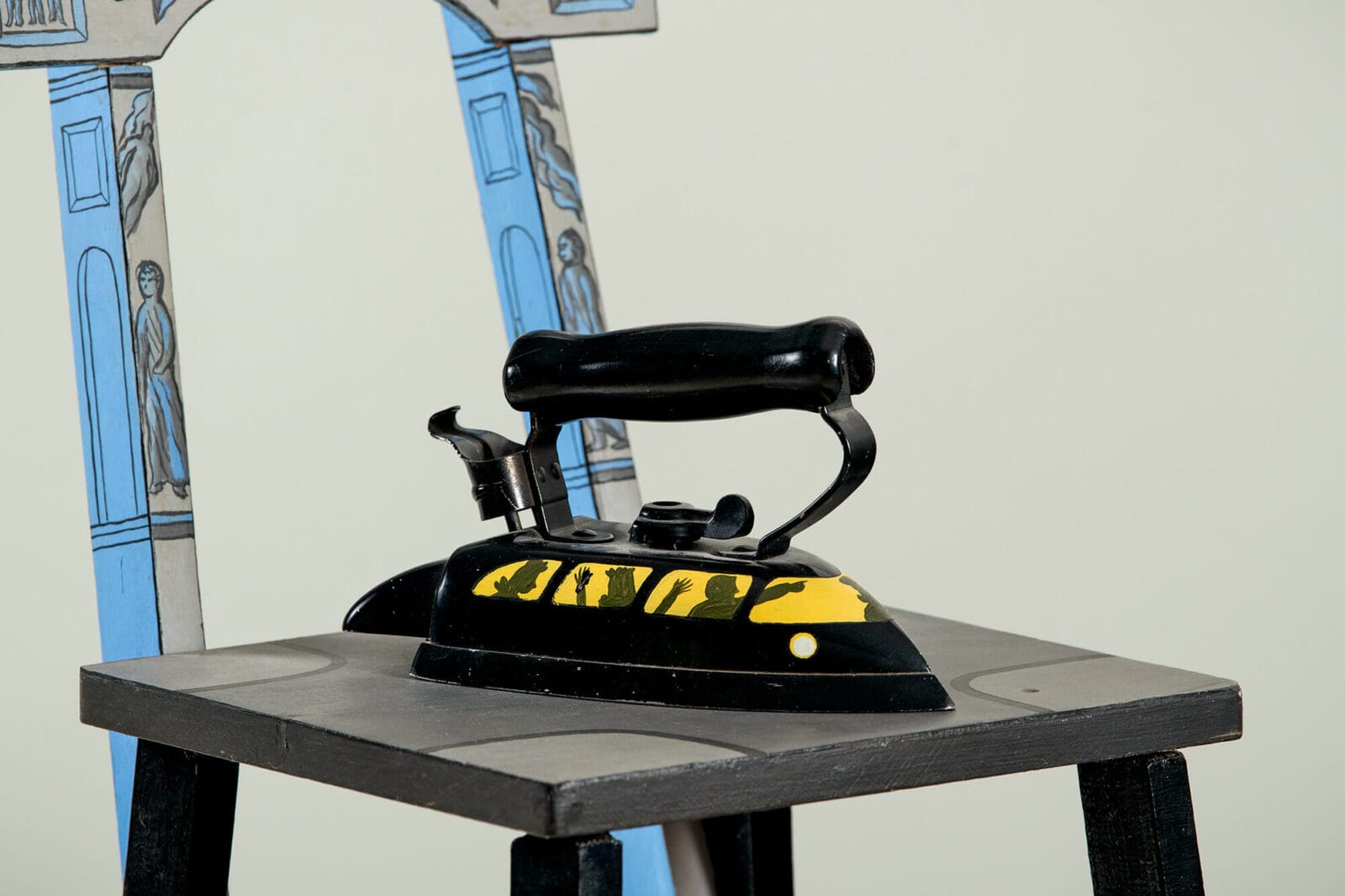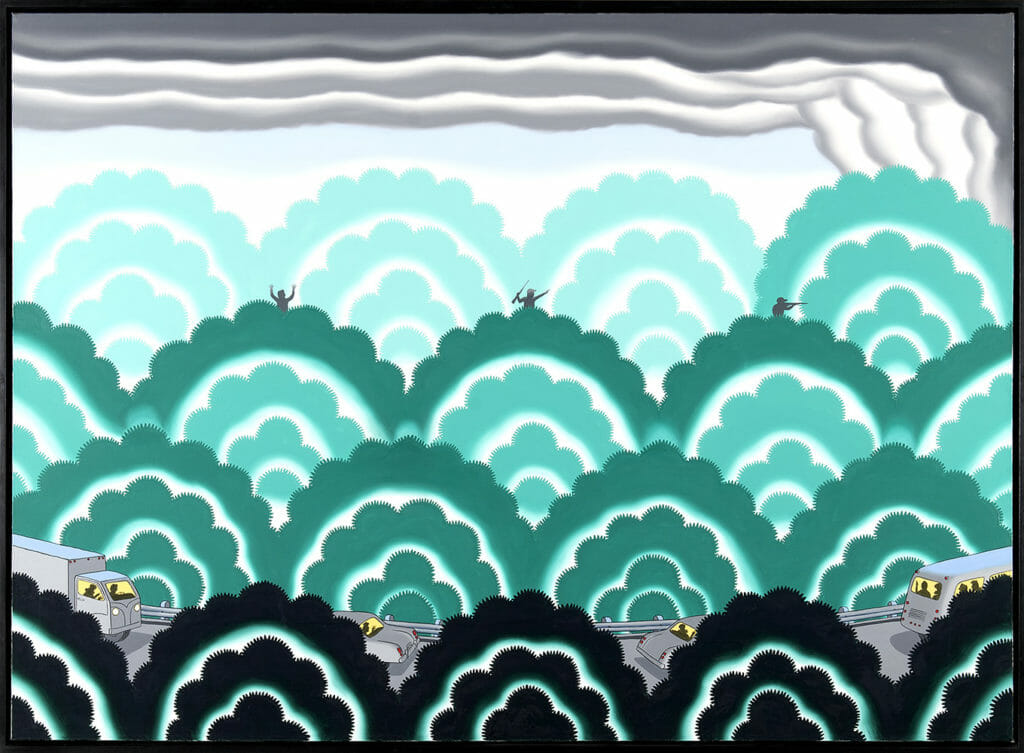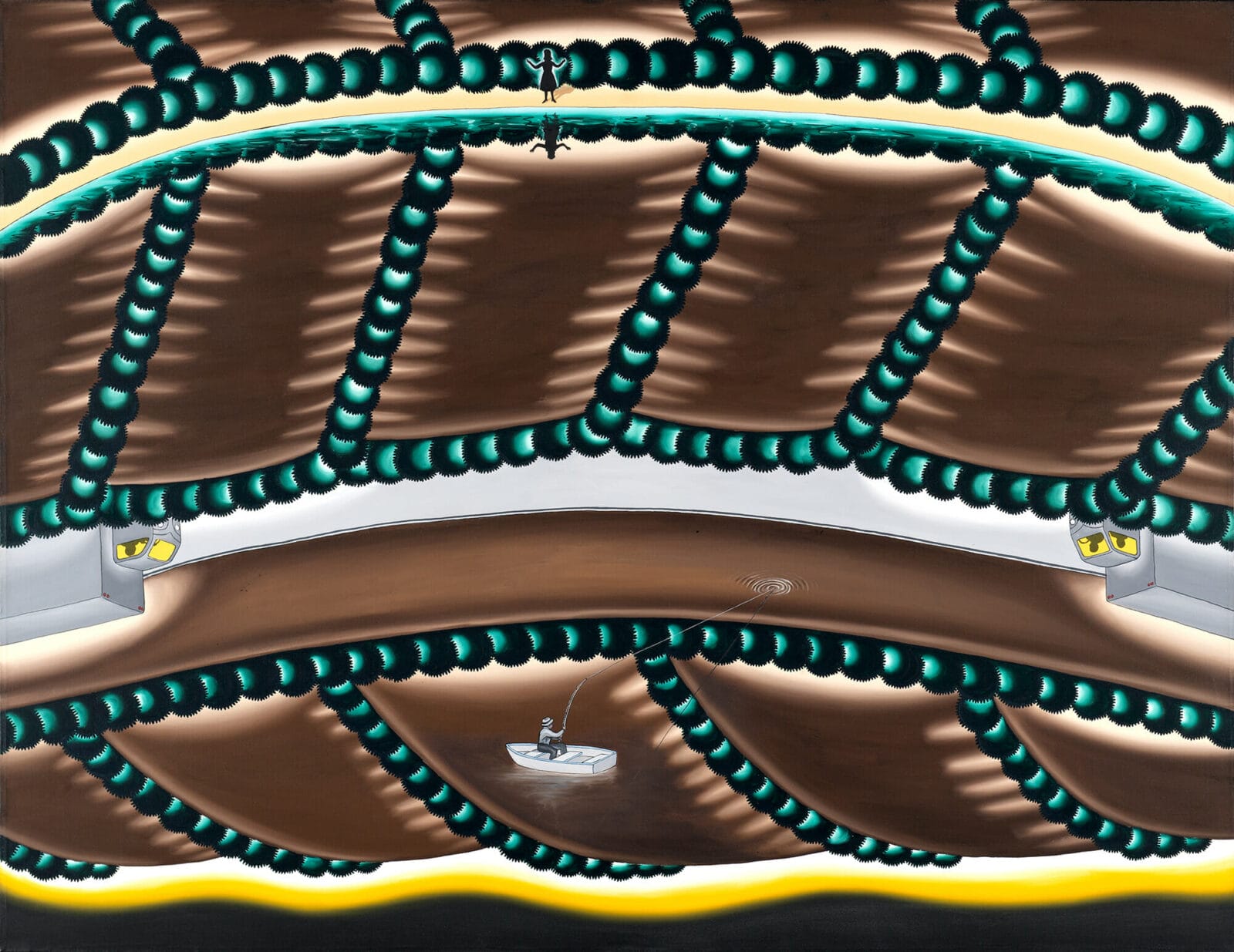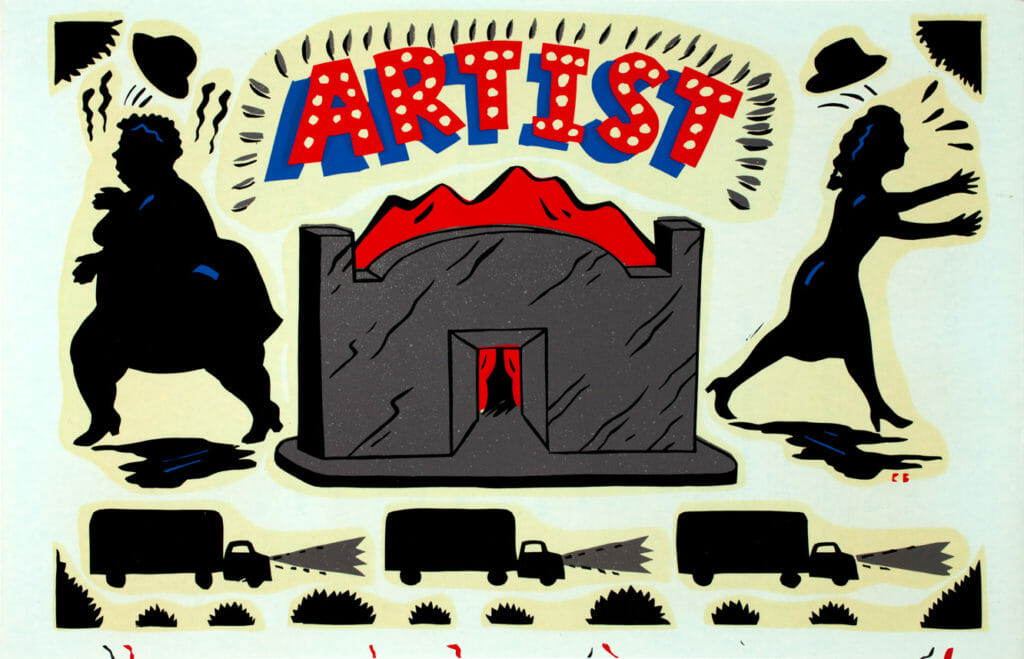Roger Brown
Born: 1941 (AL, United States)
Died: 1997 (Atlanta, GA, United States)
Born and raised in Alabama, Roger Brown moved to Chicago in 1962 to study art. He received his M.F.A. from the School of The Art Institute of Chicago in 1970. During his undergraduate and graduate years at the school, his paintings were shown along with the work of other fellow art students—including Jim Nutt and Ed Paschke—at the Hyde Park Art Center and the Museum of Contemporary Art. Having in common their interests in outsider art and Surrealism, these artists gave themselves the name of The Hairy Who. In their social and political concerns and their fascination with popular culture, they mark the second generation of Chicago Imagism and are a regional offshoot of American Pop art, which was centered in New York.
Brown’s most important art subjects are natural, urban, and suburban landscapes. His art is characterized by a style that draws upon the simplifications of cartoons and folk art. It is epitomized by bright flat color and landscape elements that are transformed into bold patterns of repeated motifs. Brown’s immediately recognizable human beings are small, black figures that often appear silhouetted in windows or stroll through open terrains. Although his scenes can have an everyday appearance, they are also a quirky mix of comical and disturbing elements.
Brown is represented in major national and international museums. In addition to paintings, he made prints, found-object sculptures, and designs for the theater. He died a tragic death at the age of fifty-six.
Brown’s most important art subjects are natural, urban, and suburban landscapes. His art is characterized by a style that draws upon the simplifications of cartoons and folk art. It is epitomized by bright flat color and landscape elements that are transformed into bold patterns of repeated motifs. Brown’s immediately recognizable human beings are small, black figures that often appear silhouetted in windows or stroll through open terrains. Although his scenes can have an everyday appearance, they are also a quirky mix of comical and disturbing elements.
Brown is represented in major national and international museums. In addition to paintings, he made prints, found-object sculptures, and designs for the theater. He died a tragic death at the age of fifty-six.
Artworks
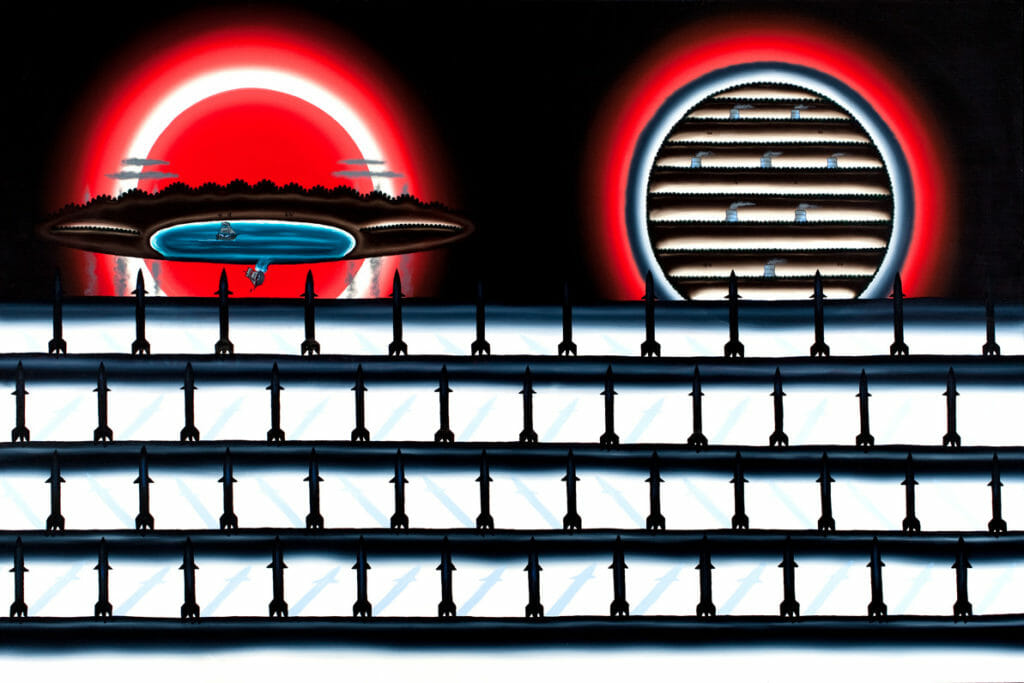
Welcome to Siberia, The Nuclear Freeze, The Flat Earth Society, No Nukes and The Dark Ages (When the Earth Was Flat and the Evening Sun Was Red From Looking Down Into Hell)
1983
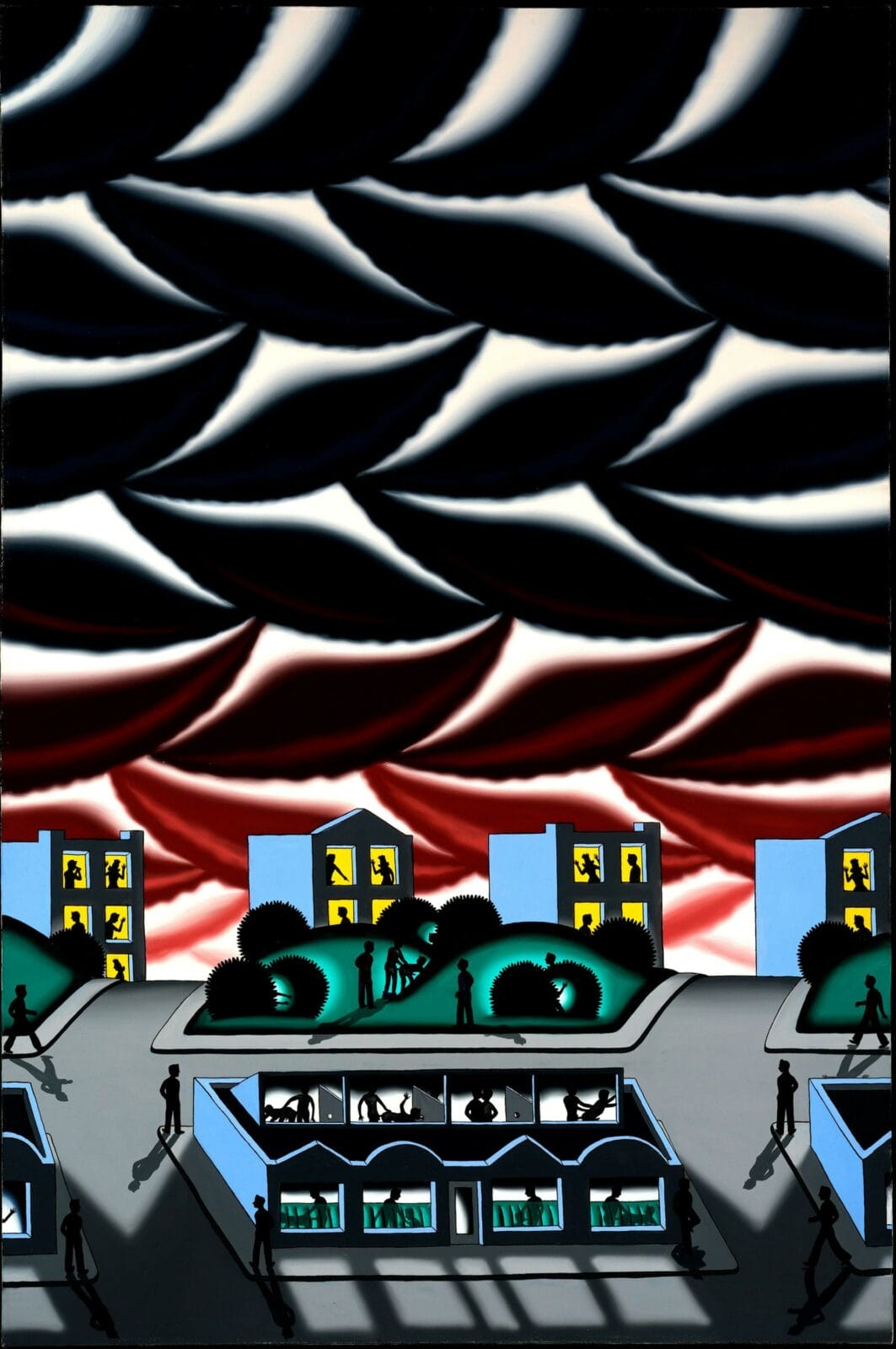
City Nights: All You-Wanted-To-Know-or-Don’t-Want-to-Know-And-Were-Afraid-To-Ask-A-Closet-Painting (subtitle supplied by Barbara Bowman)
1978
